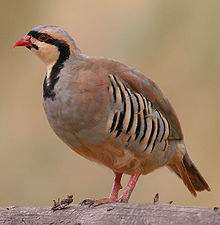General Knowledge
In Idaho, backpackers are the dominant recreational group between June and September, with the alpine lakes of the Seven Devil Mountains being the main attraction. Equestrians dominate the Oregon side with heaviest use associated with spring and fall big game hunt season. However, the lower elevations offer wilderness recreational opportunities year round. The diversity in elevation can also cause unpredictable weather, with temperatures ranging from nighttime lows of 30 degrees in alpine country to over 100 degrees in lower elevations near the Snake River.Activities
While in Hells Canyon, you can enjoy challenging recreational activities like hiking, backpacking, climbing, kayaking, canoeing, rafting, horse packing, bird watching, and stargazing.Regulations
Unless otherwise specified, no motorized equipment or mechanical transport, with the exception of wheelchairs, is allowed. This includes the use of motor vehicles, motorboats, motorized equipment, bicycles, hang gliders, wagons, carts, portage wheels, and the landing of aircraft including helicopters, unless provided for in specific legislation. This is generally true for all federal lands managed as designated wilderness.In a few areas some exceptions allowing the use of motorized equipment or mechanical transport are described in the special regulations in effect for a specific area.
These general prohibitions have been implemented for all national forest wildernesses in order to implement the provisions of the Wilderness Act of 1964. The Wilderness Act requires management of human-caused impacts and protection of the area's wilderness character to insure that it is "unimpaired for the future use and enjoyment as wilderness." Use of the equipment listed as prohibited in wilderness is inconsistent with the provision in the Wilderness Act which mandates opportunities for solitude or primitive recreation and that wilderness is a place that is in contrast with areas where people and their works are dominant.
Entering the Hells Canyon Wilderness with more than eight people is prohibited.
Except when authorized by a Forest Officer, camping in excess of 14 days during any 30 day period is prohibited.
STOCK USERS
Entering the Hells Canyon Wilderness with more than sixteen head of stock per party is prohibited.Hitching or tethering of horses or other saddle or pack animal to trees at campsites except for the purposes of loading, unloading, saddling, unsaddling is prohibited.
It is prohibited to possess or store hay or crop products that are not state certified weed-free, to include any hay, hay cubes, straw, grain or other crop or mulch product within all congressionally designated wilderness and trailheads leading into wilderness within the boundaries of the National Forest System of the Pacific Northwest Region in the States of Washington, Oregon and Idaho.











